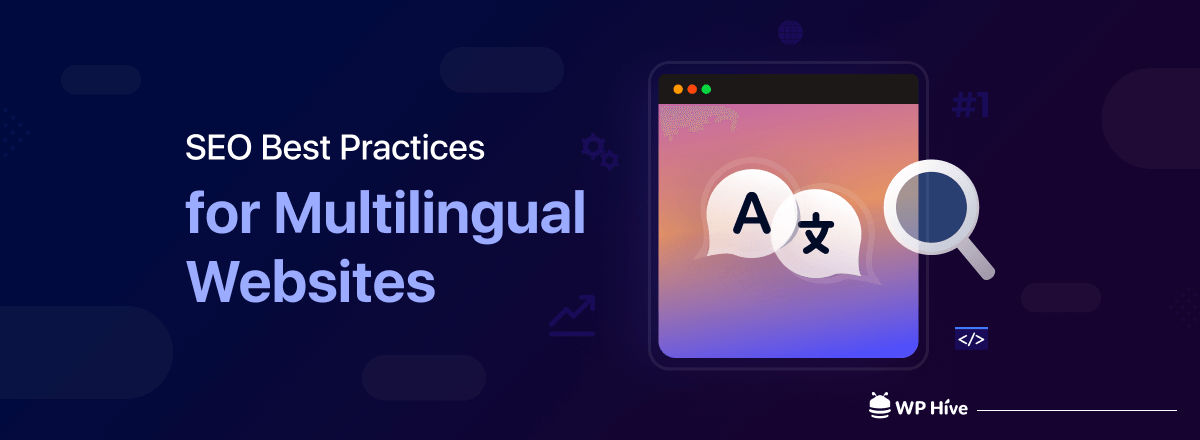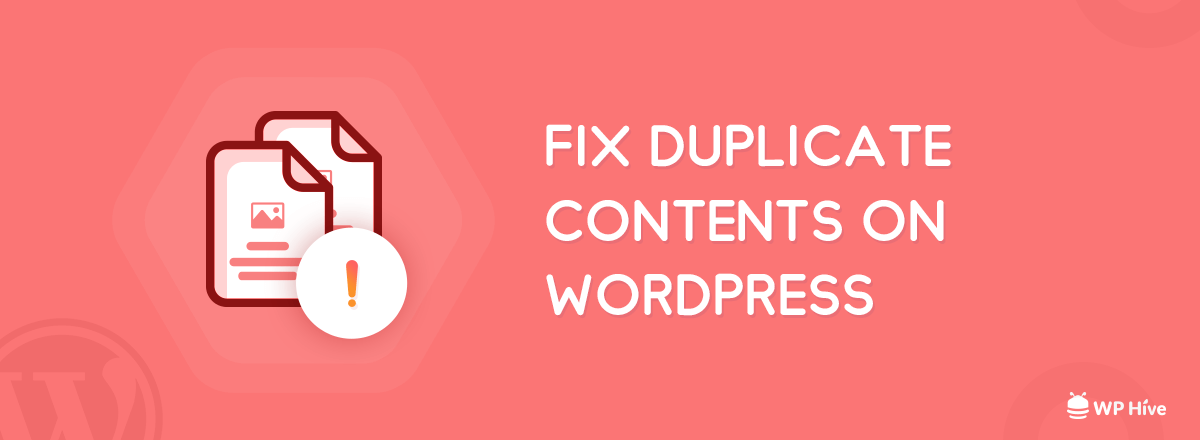10 Multilingual Website SEO Best Practices You Should Follow

A multilingual website is a must-have for site owners, especially businesses looking to reach new audiences and expand internationally. However, it’s not just about creating a multilingual website; SEO optimization is also necessary.
Multilingual websites and SEO are closely related. By optimizing your website for multiple languages, you can improve your search engine rankings and reach a wider audience.
Therefore, you must implement SEO best practices for optimal results from a multilingual website. In this article, we will discuss what SEO strategies you can implement.
What is multilingual SEO for your website?

Multilingual SEO is optimizing a website available in multiple languages for search engines. It involves implementing SEO techniques to improve page rankings in specific language search results and driving traffic to each language version of the site.
It’s also essential for businesses that want to target multiple regions. With the growing global population of internet users, many customers seek products, services, and information in their native language.
According to a CSA Research article, 76% of users prefer to buy products with information in their language because they can get it more easily. Thus giving users a better experience in their language.
On the other hand, multilingual SEO will help increase your site’s ranking in each target country so that your site will be easier to find and ultimately increase sales conversions.
Learn the Easiest Way to Create a Multilingual WordPress Website
Planning a multilingual website with automatic translation
One way to create a multilingual website is to use automatic translation. That is a translation tool that will translate your site automatically.
Even though it is automatically translated quickly and easily, you must still prepare several things. Below, we will discuss plans to create a multilingual website with automatic translation.
1. Choosing the right language for your website

Choosing the right language is important when planning a multilingual website with automatic translation. The choice of language should align with your target audience, business goals, and global market reach.
You can start by identifying the main language used by your target audience. Conduct thorough market research to understand the language preferences of your potential users in different regions.
Not only is it based on the target country’s language, but you must also consider the languages often used on various multilingual websites.
Based on an article from W3Techs on content language usage statistics for websites. The following are the top 10 languages frequently used in web content based on W3Techs data.
- English: 51.7%
- Spain: 5.6%
- Germany: 4.9%
- Russia: 4.4%
- Japan: 4.5%
- France: 4.3%
- Portuguese: 3.2%
- Italy: 2.4%
- Türkiye: 2.0%
- Dutch, Flemish: 1.8%
2. Focus on technical planning
After determining what languages will be added to the website, you must consider using the domain structure. A multilingual website’s domain structure can significantly impact functionality, search engine optimization (SEO), and content management.
There are three domain structures that you should remember to use.
- Subdomain: when using a subdomain, the domain for each language page is unique, such as es.yoursite.com for English and fr.yoursite.com for French. The advantage of subdomains is that the URL for each language is visible clearly and separately. This also makes it easier to set language tagging. However, search engines consider subdomains separate properties, making it difficult to transfer the authority of the parent domain.
- Subdirectories: The subdirectory option places the language version in a directory within the main domain, such as domain.com/es/ for Spanish and domain.com/en/ for English. This can make management easier and provide domain unity but may require extra attention regarding URL structure.
- Separate domains: the third way is to create a domain for each language, such as yoursite.en, yoursite.es, or yoursite.fr. This provides the cleanest and most professional URLs. While providing a clear understanding, this approach can require additional investment in domains and hosting.
3. Ensure quality translation and localization of content

A CSA Research study says that 65% of audiences prefer content in their language, even if the quality is poor.
Therefore, you must improve the translation quality and localize content to get more attention from your audience. Content localization ensures that the translated content fits authentically with the cultural and linguistic nuances of the target audience.
Create content that is not only linguistically accurate but also culturally relevant, such as adjusting date formats, currency, images, and colors to align with certain cultural norms.
4. Manage content updates across different languages
Managing content updates in multiple languages can be a huge challenge for multilingual websites. When content is updated or added in one language, the same changes must be made in all language versions to keep the information consistent and accurate.
Even though the translation service will translate automatically, it always helps to collaborate with a professional translator to maintain quality.
Provide style and tone guidelines for each language so that translated content has a consistent voice. Finally, cross-observation by native speakers is important to ensure local relevance and accuracy of the translation in each language.
5. Carefully deal with duplicate content issues

When developing a multilingual site, you often need help with duplicate content. When content is translated into multiple languages, search engines can mistake it for duplication, harming SEO.
Therefore, it is important to know how to overcome the problem of duplicate content on multilingual sites. Below, we provide some tips to prevent duplicate content.
- Use the rel=”alternate” hreflang tag to indicate the relationship between different language versions of the same page. This tells search engines that the content is simply a translation, not a duplication.
- Set robots.txt to block indexing of certain language pages if necessary. This prevents unwanted language versions from being browsed.
- Include language codes and geographic locations on each page using meta tags to help engines detect unique versions.
- Ensure the translations are not identical by including some unique and relevant content in each language version.
With the methods above, duplicate problems on multilingual sites can be minimized to optimize SEO for each language.
After knowing what needs to be prepared in building a multilingual site, it is important to determine what translation service you will use.
For those of you who want to build a WordPress website, various automatic WordPress translation services are available on the internet. You can choose the most suitable one based on your requirements, including pricing and features.
SEO strategies for multilingual websites (Tips on multilingual SEO)

After understanding what needs to be prepared, we will go into SEO strategies for multilingual sites. More than just creating a multilingual site is required. You need to implement multilingual SEO steps so that the site can reach the target country.
Therefore, here are several SEO strategies that you can apply.
#1. Keyword research and optimization in multiple languages
The first tip is keyword research for various languages. Popular keywords in one language are not necessarily popular in other languages.
Therefore, keywords must be researched specifically for each language of the target audience.
Use multilingual keyword research tools like Google Keyword Planner, SEMrush, or Ahrefs to get specific search data in each country and language. Then, find the most popular and relevant search phrases and terms for your site’s topic.

After getting a list of main keywords for each language, use them optimally in your content by inserting target keywords naturally into the translation without seeming forced.
Check keyword popularity periodically and adjust content optimization strategies if search patterns change. Pay attention to the latest trends in each target country.
#2. URL structures for multilingual websites
Proper URL structure is essential for SEO on multilingual websites. URLs are a major ranking factor influencing how search engines index and categorize pages in a particular language.
As explained above, pay attention to the URL structure used. Make sure you choose between subdomains, subdirectories, or separate domains.
For example:
- yoursite.com/en/about-us uses the /en/ subdirectory for English.
- fr.yoursite.com/à-propos-den-nous with subdomain fr for French.
This structure will help search engines properly categorize content based on language. Subdirectories are used more often than subdomains because they are considered part of the parent domain, so redirection is easier.
Then, ensure that the URL structure reflects the site hierarchy and naturally contains the main keywords, as in the following example.
- yoursite.com/running-shoes/en ✅
- yoursite.com/products123/en ❌
Descriptive URLs relevant to the page content are very important for SEO.
When changing a site’s URL structure, the next tip is to set a 301 redirect from the old URL to the new URL. This prevents loss of SEO authority when visitors and search engines are automatically redirected to new URLs.
#3. Implementing hreflang tags for language targeting
Hreflang tags are an important component in multilingual website optimization. This tag tells search engines that a web page has a translated version in another language.
With hreflang tags, search engines can display search results in the language that best suits the user’s location and language preferences.
The way it works is by placing an hreflang tag on every page that has a multilingual version. The hreflang attribute defines a language code, such as id, en, or es. Then, the canonical URL of the language version is specified as the href value.
For example, an ‘about us’ page in English will have hreflang tags heading to the French and Spanish versions.
This is what the tag you should add looks like.
| <link rel=”alternate” hreflang=”fr” href=”https://site.com/fr/à-propos-de nous/”><link rel=”alternate” hreflang=”es” href=”https://site.com/es/sobre-nosotros/”> |
Likewise, we added hreflang tags for the other two languages on the French and Spanish pages.
That way, search engines know that the three pages are different language versions of the same content. Then, search results can be displayed in the language that best suits the user’s location and language preferences.
#4. Ensuring website speed and mobile optimization across all language versions

Site speed and mobile optimization are important aspects of SEO that need to be considered on multilingual sites. A slow and unresponsive site on mobile devices will negatively impact user experience and search engine rankings.
To ensure stable site speed, ensure all images are compressed without excessively reducing the quality. Image compression reduces file size, so they load faster. Then, do the same thing to the JavaScrip script and CSS files by removing unnecessary spaces and comments.
For a better mobile experience, make sure your site uses responsive design to scale the layout and content across devices. Check responsiveness using tools like Google Mobile-Friendly Test.
Finally, periodically test site speed using Google PageSpeed Insights for each language version.
#5. Metadata optimization
The final multilingual SEO tip is optimizing metadata, including page titles, meta descriptions, and image alt text. Optimized metadata can help improve local search engine retrieval and content relevance to target audiences.
Below are some appropriate steps for optimizing metadata.
- Title Tag: make sure the page title is relevant, describes the page’s content, and contains relevant keywords for each target language.
- Meta Descriptions: Meta descriptions are translated into each added language. It must be interesting, informative, and contain the targeted keywords.
- Alt Text: Image alt text must contain keywords and an accurate image content description. Don’t copy alt text between languages because the visual context can differ.
- Heading Tags: Using heading tags (H1, H2, H3, etc.) wisely can help search engines understand the structure of the page content. Use relevant keywords in heading tags to improve SEO optimization.
If so, conduct periodic metadata audits to ensure data is recovered and optimal. Then, fix errors and inconsistencies so that the SEO of each language version is maintained.
Also read: ⤵️
Final thoughts on multilingual website SEO
Building a multilingual website using automatic translation requires several preparations, starting from choosing the target language, preparing the domain structure, ensuring quality translation, managing content updates, and overcoming the problem of content duplication.
After a multilingual website is built, it is important to implement multilingual SEO tips to make it easier to index the site and make it easier for users to find your site in top searches.
Ensure you have researched keywords according to language, chosen the right URL structure, implemented hreflang tags, ensured stable site speed, and optimized metadata.
If everything is maximized, it will be easier for you to get audiences from foreign countries. So what are you waiting for? Implement SEO best practices today!
Disclosure: WP Hive earns a commission when you buy through partner links. It does not influence the unbiased opinions of our writers. Learn more →
https://wphive.com/seo/multilingual-website-seo-best-practices/
Editorial Staff
Editorials from WP Hive staff.



